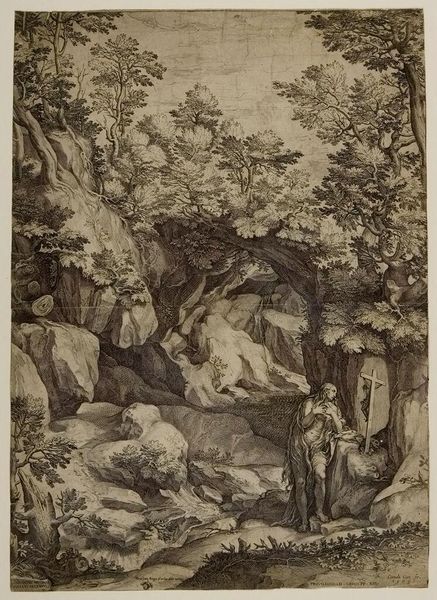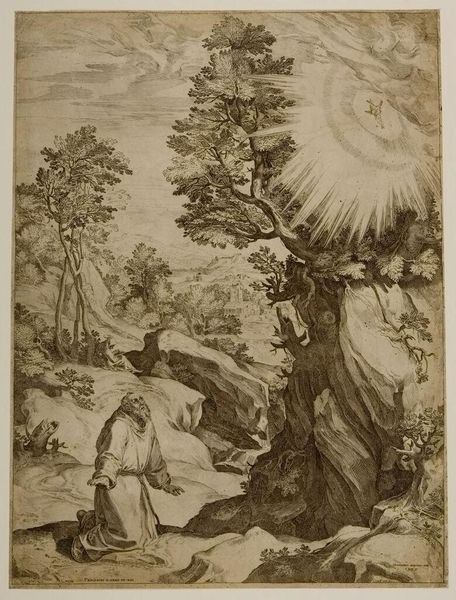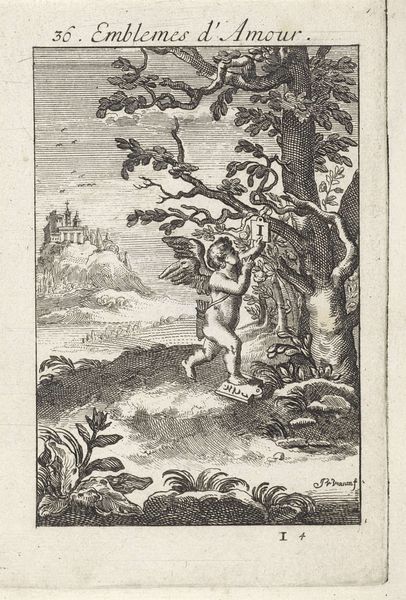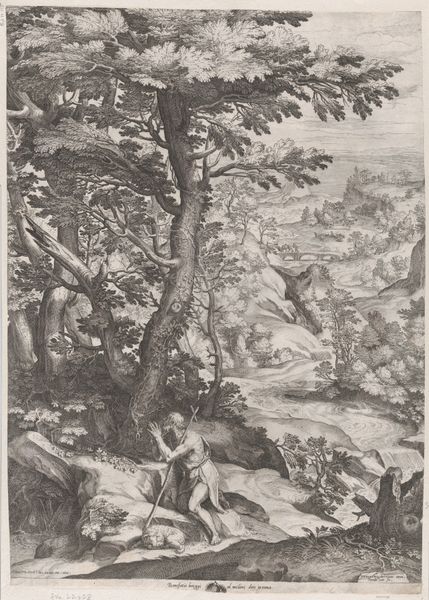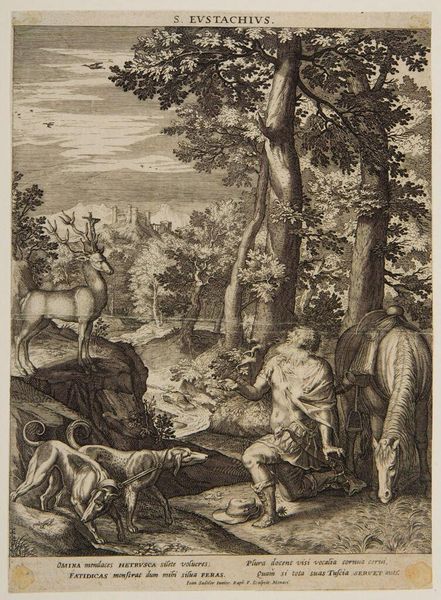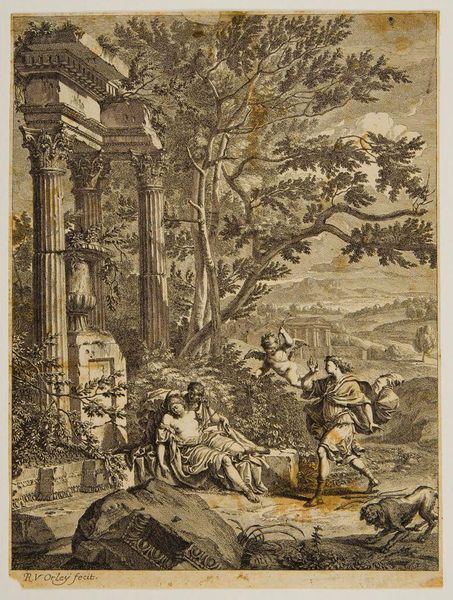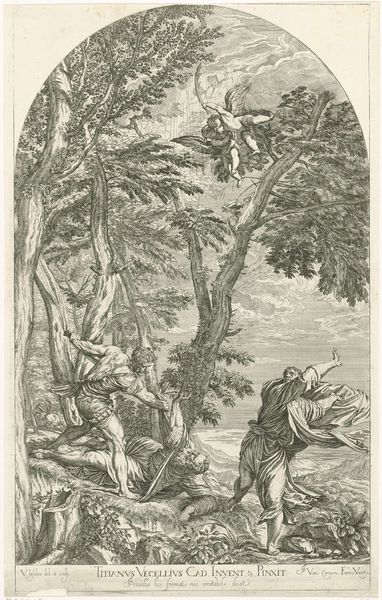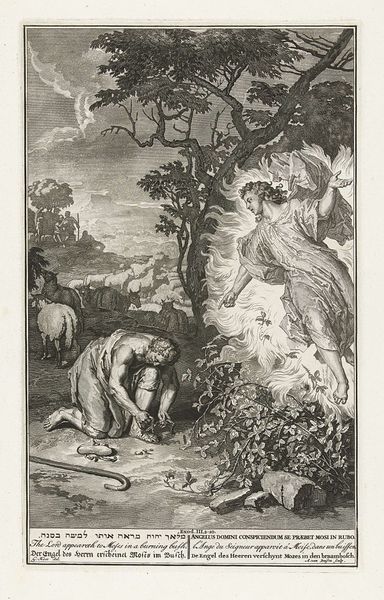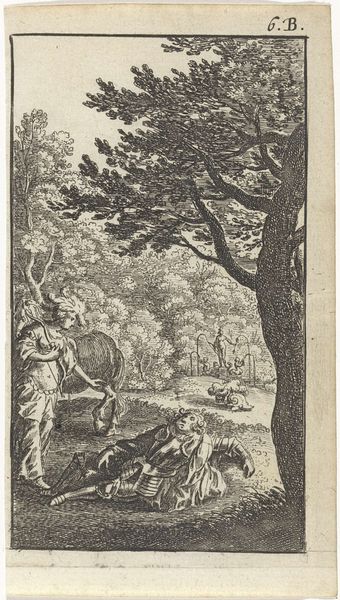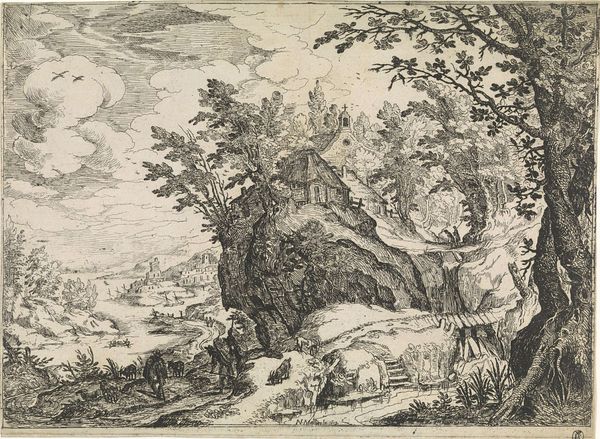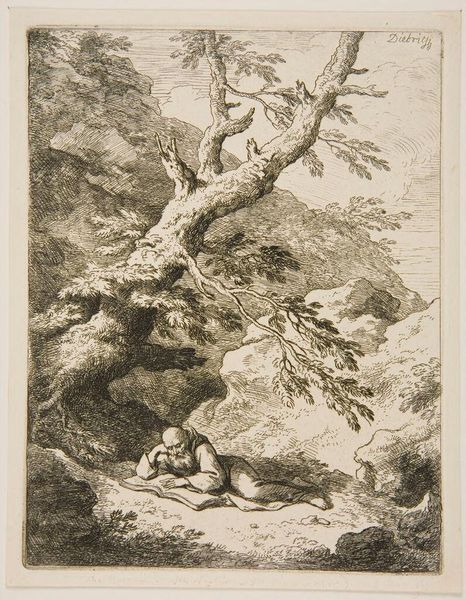
Copyright: CC0 1.0
Curator: This is Cornelis Cort’s "Saint John the Baptist," currently residing at the Harvard Art Museums. It's a deeply textured scene. Editor: My first impression is how much the landscape seems to dominate the figure; it almost feels like John is a supplicant to nature itself. Curator: Cort, working in the latter half of the 16th century, was clearly interested in exploring the material world. Look at the intricate detail in the foliage, the way the light filters through the trees. Editor: And the symbolism is rich! John, of course, represents repentance and preparing the way, but the lamb at his feet, the wilderness—they all speak to themes of sacrifice and spiritual cleansing. Curator: It's tempting to see the printmaking process here—the labor, the deliberate choices in mark-making—as mirroring John’s own discipline and dedication. Editor: Perhaps the wilderness, as depicted, mirrors the internal landscape of spiritual struggle and renewal. It's a potent image, even after all this time. Curator: Indeed; observing the labor put in reveals something about the cultural values of the time and their religious beliefs. Editor: Absolutely, a testament to the enduring power of symbols to resonate across centuries.
Comments
No comments
Be the first to comment and join the conversation on the ultimate creative platform.
